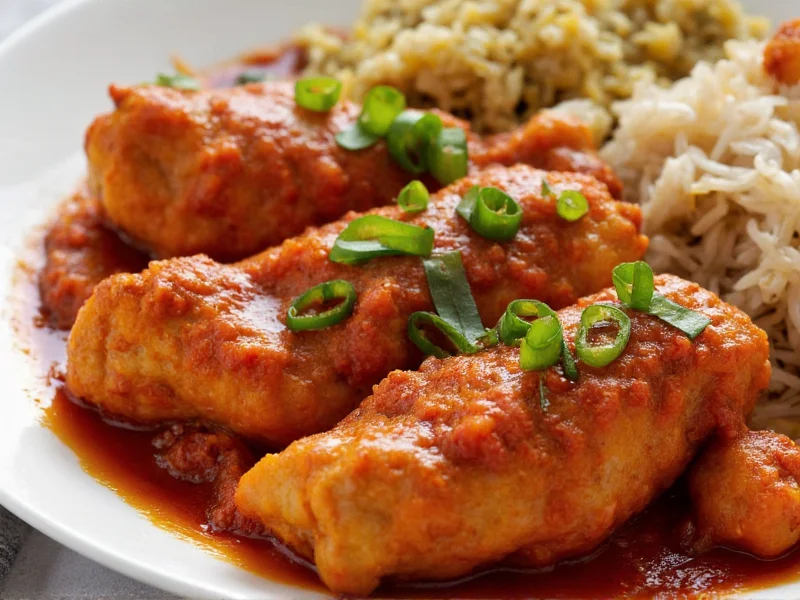When exploring Indian cuisine, understanding the spice profile of popular dishes like chicken tikka helps you make informed choices whether dining out or cooking at home. This beloved dish features tender pieces of chicken marinated in a flavorful mixture before being grilled or cooked in a tandoor oven.
What Exactly Is Chicken Tikka?
Chicken tikka consists of boneless chicken pieces marinated in a mixture of yogurt and spices, then cooked at high temperatures. The word "tikka" refers to small, bite-sized portions of meat. Originating from the Punjab region, this dish has become popular worldwide as an appetizer or main course.
Understanding the Spice Components in Chicken Tikka
The marinade that gives chicken tikka its distinctive flavor contains several key ingredients that contribute to its overall taste profile:
| Spice Ingredient | Flavor Contribution | Heat Level |
|---|---|---|
| Garam masala | Warm, aromatic blend | Mild |
| Cumin | Earthy, slightly smoky | Mild |
| Coriander | Citrusy, floral notes | Mild |
| Turmeric | Earthy, slightly bitter | Mild |
| Fresh ginger & garlic | Pungent, aromatic base | Mild to moderate |
| Red chili powder/cayenne | Provides heat | Moderate (used sparingly) |
The yogurt in the marinade plays a crucial role in balancing the spices. Its natural acidity tenderizes the chicken while its cooling properties counteract potential heat from chili components. This creates a harmonious flavor profile where no single spice dominates.
Factors That Affect Chicken Tikka's Spiciness
Several variables influence how spicy chicken tikka might be when you order or prepare it:
- Regional variations: Northern Indian versions tend to be milder, while Pakistani preparations often include more chili
- Chef's preference: Restaurants frequently adjust spice levels based on their target clientele
- Customization options: Many establishments will prepare chicken tikka to your preferred spice level if requested
- Additional sauces: Chicken tikka is sometimes served with a mild tomato-based sauce that further reduces perceived heat
Chicken Tikka Compared to Other Indian Dishes
If you're familiar with other Indian dishes, understanding where chicken tikka falls on the spice spectrum can be helpful:
- Compared to chicken vindaloo: Chicken tikka is significantly milder (vindaloo is one of the spiciest Indian dishes)
- Compared to chicken tikka masala: The masala version often has a slightly milder profile due to the creamy tomato sauce
- Compared to butter chicken: Chicken tikka typically has more pronounced spice notes than the very mild butter chicken
- Compared to rogan josh: Generally less spicy than this Kashmiri lamb curry
Ordering or Preparing Chicken Tikka to Your Preference
Whether dining out or cooking at home, you can control the spice level of your chicken tikka:
- When ordering at restaurants, specify "mild" or "less spicy" to ensure a gentler flavor profile
- At home, reduce or omit the red chili powder in the marinade for a completely mild version
- Add fresh cilantro or mint chutney as a cooling accompaniment
- Pair with raita (yogurt sauce with cucumber) to balance any heat
- Request that the kitchen prepare your chicken tikka without additional chili garnishes
Many Indian chefs understand that international diners often prefer milder versions of traditional dishes. Don't hesitate to communicate your spice preferences when ordering chicken tikka at restaurants.
Why Chicken Tikka's Mild Spice Profile Makes It Popular
The balanced spice level of chicken tikka contributes significantly to its global popularity. Unlike dishes designed to be fiery hot, chicken tikka showcases the complexity of Indian spices without overwhelming heat. The marinade's yogurt base creates a perfect canvas for the aromatic spices to shine through while remaining accessible to those with varying tolerance for chili heat.
This approach reflects a fundamental principle of Indian cuisine: spices are used to enhance flavor, not merely to create heat. The careful balance in chicken tikka allows the natural taste of the chicken to complement the aromatic spices rather than being overpowered by intense heat.











 浙公网安备
33010002000092号
浙公网安备
33010002000092号 浙B2-20120091-4
浙B2-20120091-4